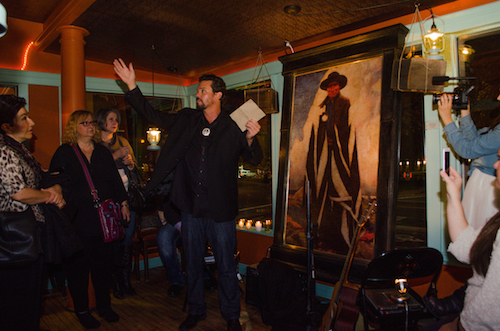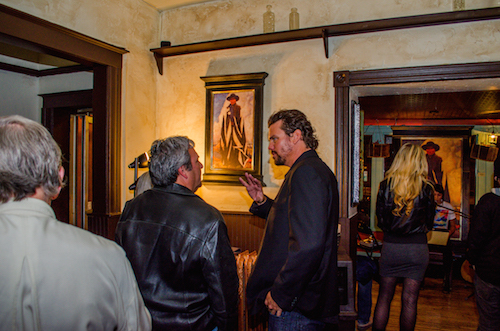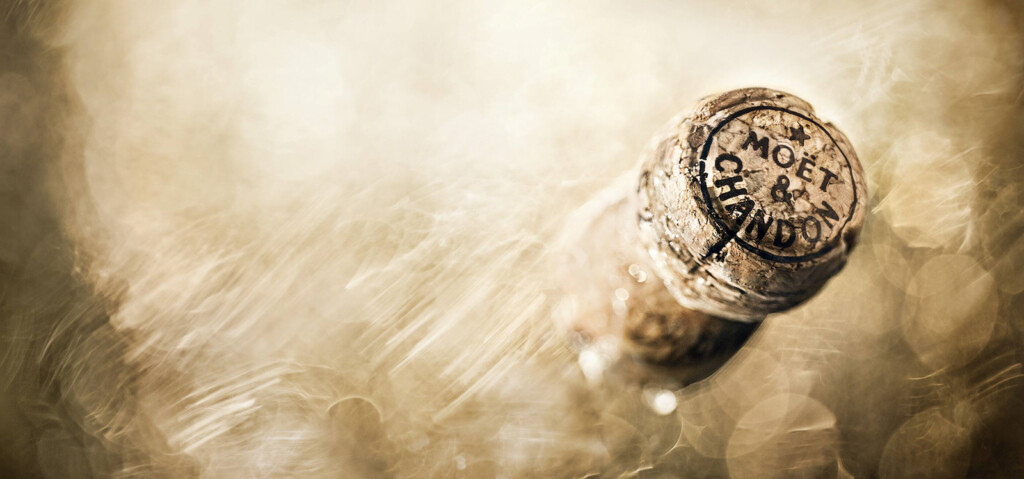
The very best you can hope for when attending an artist’s unveiling is to be blown away by the personality of the artist and their work; at worst you leave slightly buzzed from the free wine. Prior to the unveiling at Blue Poblano on November 8 I had never met Sean Diediker, but after surveying the attendees I knew exactly who he was. I recognized him from a look of intensity that could only belong to someone bold enough to abandon a potential career as a physician to pursue a one as an artist and succeed. Half an hour after I arrived the feeling that we were all part of something rare and special was confirmed. A medicine man from the Hidatsa tribe approached the massive painting. In his hands he held a half shell filled with smoldering sage and proceeded to bless the painting. A fitting tribute to a work titled Medicine Man. I caught up with Sean after the unveiling at his Spanish Fork home.
MJ: “How did this new work come about?”
SD: “It’s largely based on the history I have in New Mexico. My grandfather had a trading post on the Star Lake reservation back in the 1940s. Eventually Grandpa Hank got very, very, close with all the elders there. He was the only white man involved in some of the ceremonies. Growing up I remember the kachina dolls and the rugs and all the turquoise jewelry my mom has but I never knew the family history, so this was a way of going back and exploring some stuff and searching my lineage. I’ve always loved Maynard Dixon paintings, The Taos Seven, and Nicolai Fechin who is one of my favorite painters and they’re all out of New Mexico and I thought, you know what? I’ve got a heritage there that I’ve never documented with paint. That’s when I started building the composition for Medicine Man.”
MJ: Tell me a little bit about your process to get into the right mindset to work.
SD: “I work from life and from photos as well, there is a danger in working from photos because photos lie, they tell you colors are different so you really have to be in the painting mindset. I’ve got tons of art books down in my studio and I’ll sit and go through them for twenty or thirty minutes before I lay down a stroke. I’ll put some cat nip on the floor to get the cat to come down and start purring, I’ll sit there looking through my books and get into the mind set for painting. I’ll look for solutions to whatever problem I’m facing. I’ll ask myself how did van Gogh deal with this. The solutions are already out there you just have to find them.
MJ: I was looking through your 2010 book The Wax Onion and I realized that you have a wide range of styles. Tell me about that?
SD: Yeah, my galleries hate me because I switch up my style so intensively. The diversity in work is just to make me want to go down to the studio everyday… I guess you could say I really haven’t found my niche. I see time and time again artists who, if they paint red horses and red horses are what’s selling then sometimes that’s all galleries are interested in. That’s when it becomes work, when your producing a product, I try to explore mediums and different subjects that make it so it’s not work, so it’s something fresh every time and I find that my paintings are much better in the end because of it.
MJ: Do you ever worry about that leading to failure?
SD: Well, I view successes as the ability to be free, rather than having a large bank account. If an artist really gives themselves the time to really get good at what they do and not jump on the first niche band wagon that is presented to them then it opens the door to all kinds of opportunities. Artists have to have the courage to change up what they’re doing and fail. It’s okay to fail. If an artist is not failing they are not progressing.
MJ: How does Utah’s art scene differ from other places you’ve been?
SD: From what I’ve seen Utah has the most talent of any state in the union but unfortunately it’s all exported because Utah doesn’t support the arts like other states do. A lot of artists that I know really well create art here, they love living here, but Utah just doesn’t have as many clients. Most of my stuff goes back east or out to L.A.
MJ: What made you choose to be an artist over a more stable career path?
SD: Being selfish. I really wanted to go into medicine initially. I did all the cadavers and all that, it just didn’t fill me up the way art does. I like the fact that it’s all me. There’s something about that solitary experience that allows you to have full ownership over what you create.
Medicine Man is the recipient of the 1st place award at the 29th Annual Spiritual and Religious Exhibition at the Springville Museum of Art where it is currently on display.
Learn more about Sean Diediker at www.diediker.com






